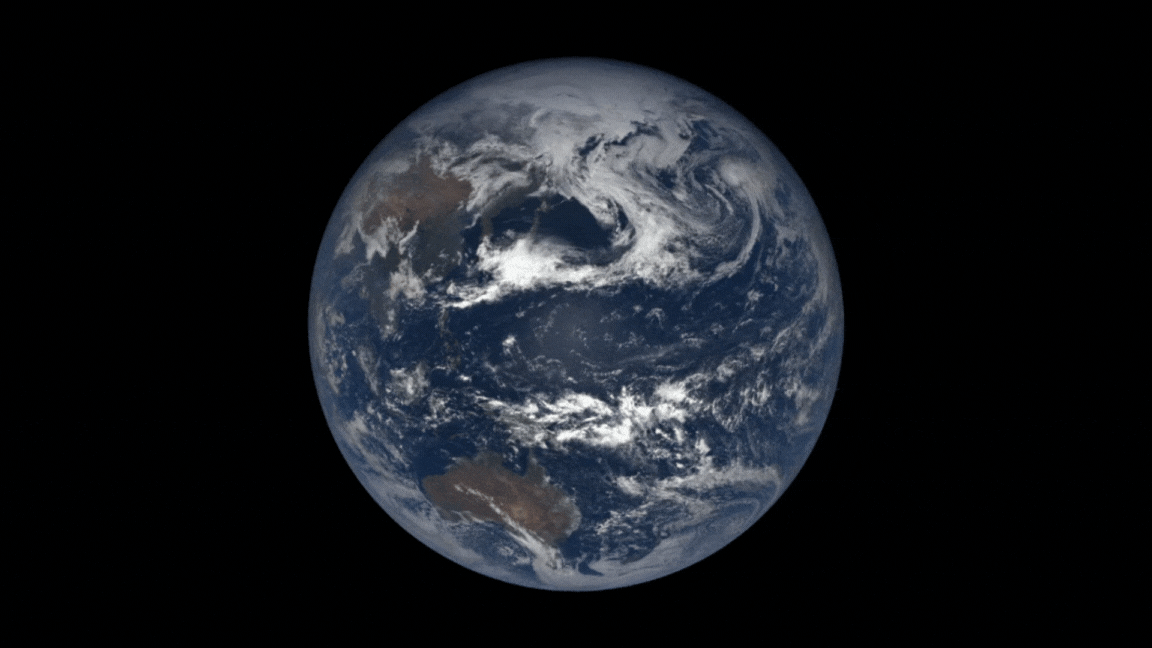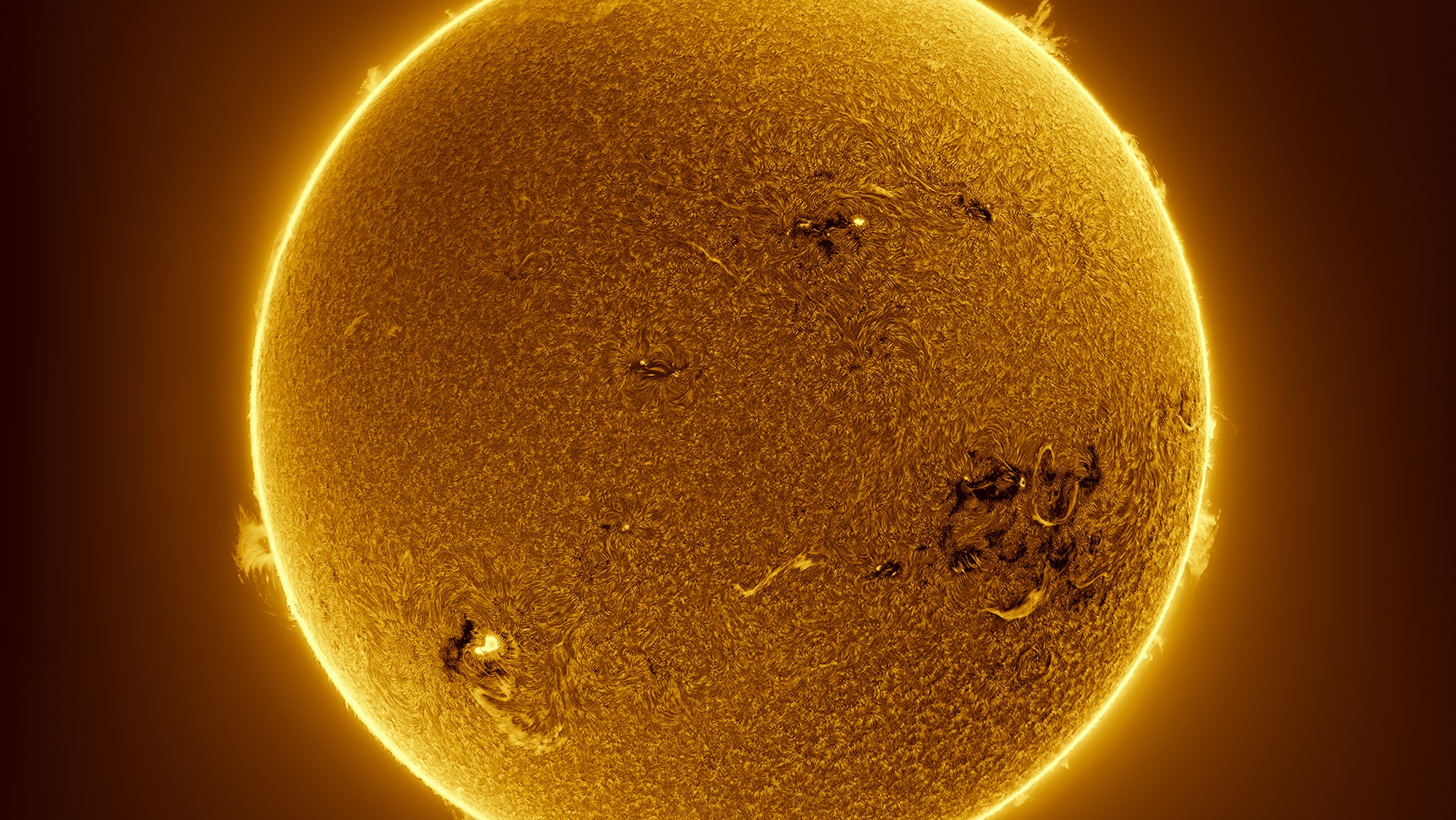How fast is Earth moving?
Earth is moving much faster than it seems.

It may feel like we're standing still, but Earth is moving through space at astonishing speeds. So, how fast is Earth moving around the sun? The answer might surprise you.
Early astronomers once believed Earth was the center of the universe, with the sun, moon, and planets orbiting around it. This geocentric model seemed to explain the movements of celestial objects, but certain observations — like planets occasionally moving backward in the sky — challenged this idea.
We now know that this apparent retrograde motion happens because Earth is constantly moving in its orbit. As our planet catches up with and passes others, like Mars, they temporarily appear to move backward before resuming their usual path. But Earth's motion doesn't stop there — we're also spinning on our axis and hurtling through the Milky Way.
So, just how fast is Earth moving through space? Let’s break it down.
Related: How big is Earth?
How fast is Earth moving Q&A with an expert
We asked Simon Lock is a research fellow in the School of Earth Sciences at the University of Bristol who specializes in planetary science, astrophysics, geophysics, and geochemistry some questions about Earth’s motion through space.

Simon Lock is a research fellow in the School of Earth Sciences at the University of Bristol.
How fast is Earth's orbit around the sun?
Earth orbits around the sun at a speed of 67,100 miles per hour (30 kilometers per second). That's the equivalent of traveling from Rio de Janeiro to Cape Town (or alternatively London to New York) in about 3 minutes.
Other than in its orbit, how else is Earth moving through space?
As well as moving around the Sun, the Sun and Earth are orbiting around the dense center of our galaxy at some 447,000 miles per hour (200 km/s). Our galaxy, in turn, is moving relative to the other galaxies around us, and so all the mass in the universe is continuously dancing around.
How does its orbital speed compare to that of other solar system planets?
How fast you need to move to keep in a circular orbit around another body is dictated by how far the two bodies are separated from each other. Planets closer to the Sun are orbiting faster than Earth, with Mercury traveling 1.6 times faster than Earth at 105,000mph(47.4km/s). At the other end of the spectrum is Neptune, which is traveling around the sun at only 18% of the speed of Earth at 12,200mph (5.4km/s).
How fast are we spinning?
Earth's spin is constant, but the speed depends on what latitude you are located at. Here's an example. The circumference (distance around the largest part of the Earth) is roughly 24,898 miles (40,070 kilometers), according to NASA. (This area is also called the equator.) If you estimate that a day is 24 hours long, you divide the circumference by the length of the day. This produces a speed at the equator of about 1,037 mph (1,670 km/h).
You won't be moving quite as fast at other latitudes, however. If we move halfway up the globe to 45 degrees in latitude (either north or south), you calculate the speed by using the cosine (a trigonometric function) of the latitude. A good scientific calculator should have a cosine function available if you don't know how to calculate it. The cosine of 45 is 0.707, so the spin speed at 45 degrees is roughly 0.707 x 1037 = 733 mph (1,180 km/h). That speed decreases more as you go farther north or south. By the time you get to the North or South poles, your spin is very slow indeed — it takes an entire day to spin in place.
Space agencies love to take advantage of Earth's spin. If they're sending humans to the International Space Station (ISS), for example, the preferred location to do so is close to the equator. That's why cargo missions to the International Space Station, for example, launch from Florida. By doing so and launching in the same direction as Earth's spin, rockets get a speed boost to help them fly into space.
How fast does Earth orbit the sun?

Earth's spin, of course, is not the only motion we have in space. Our orbital speed around the sun is about 67,000 mph (107,000 km/h), according to Cornell. We can calculate that with basic geometry.
First, we have to figure out how far Earth travels. Earth takes about 365 days to orbit the sun. The orbit is an ellipse, but to make the math simpler, let's say it's a circle. So, Earth's orbit is the circumference of a circle. The distance from Earth to the sun — called an astronomical unit— is 92,955,807 miles (149,597,870 kilometers), according to the International Astronomers Union. That is the radius (r). The circumference of a circle is equal to 2 x π x r. So in one year, Earth travels about 584 million miles (940 million km).
Since speed is equal to the distance traveled over the time taken, Earth's speed is calculated by dividing 584 million miles (940 million km) by 365.25 days and dividing that result by 24 hours to get miles per hour or km per hour. So, Earth travels about 1.6 million miles (2.6 million km) a day, or 66,627 mph (107,226 km/h).
Related: How fast does light travel?
How do the sun and galaxy move?
The sun has an orbit of its own in the Milky Way. The sun is about 25,000 light-years from the center of the galaxy, and the Milky Way is at least 100,000 light-years across. We are thought to be about halfway out from the center, according to Stanford University. The sun and the solar system appear to be moving at 200 kilometers per second, or at an average speed of 448,000 mph (720,000 km/h). Even at this rapid speed, the solar system would take about 230 million years to travel all the way around the Milky Way.
The Milky Way, too, moves in space relative to other galaxies. In about 4 billion years, the Milky Way will collide with its nearest neighbor, the Andromeda Galaxy. The two are rushing toward each other at about 70 miles per second (112 km per second).
Everything in the universe is, therefore, in motion.
What would happen if Earth stopped spinning?
There is no chance that you'll be flung off to space right now, because the Earth's gravity is so strong compared to its spinning motion. (This latter motion is called centripetal acceleration.) At its strongest point, which is at the equator, centripetal acceleration only counteracts Earth's gravity by about 0.3 percent. In other words, you don't even notice it, although you will weigh slightly less at the equator than at the poles.
NASA says the probability for Earth stopping its spin is "practically zero" for the next few billion years. Theoretically, however, if the Earth did stop moving suddenly, there would be an awful effect. The atmosphere would still be moving at the original speed of the Earth's rotation. This means that everything would be swept off of land, including people, buildings and even trees, topsoil and rocks, NASA added.
What if the process was more gradual? This is the more likely scenario over billions of years, NASA said, because the sun and the moon are tugging on Earth's spin. That would give plenty of time for humans, animals and plants to get used to the change. By the laws of physics, the slowest the Earth could slow its spin would be 1 rotation every 365 days. That situation is called "sun-synchronous" and would force one side of our planet to always face the sun, and the other side to permanently face away. By comparison: Earth's moon is already in an Earth-synchronous rotation where one side of the moon always faces us, and the other side opposite to us.
But back to the no-spin scenario for a second: There would be some other weird effects if the Earth stopped spinning completely, NASA said. For one, the magnetic field would presumably disappear because it is thought to be generated in part by a spin. We'd lose our colorful auroras, and the Van Allen radiation belts surrounding Earth would probably disappear, too. Then Earth would be naked against the fury of the sun. Every time it sent a coronal mass ejection (charged particles) toward Earth, it would hit the surface and bathe everything in radiation. "This is a significant biohazard," NASA said.
Additional resources and reading
Cornell University's "Ask an Astronomer": At what speed does the Earth move around the Sun?
NASA's "Ask the Space Scientist": What is the speed of Earth's rotation?
Bibliography
New Scientist, "How fast does Earth spin?" https://www.newscientist.com/question/fast-earth-spin/
NASA JPL, "How Fast Are You Moving When You Are Sitting Still?" 2007. https://nightsky.jpl.nasa.gov/docs/HowFast.pdf
Join our Space Forums to keep talking space on the latest missions, night sky and more! And if you have a news tip, correction or comment, let us know at: community@space.com.
Get the Space.com Newsletter
Breaking space news, the latest updates on rocket launches, skywatching events and more!

Doris is a science journalist and Space.com contributor. She received a B.A. in Sociology and Communications at Fordham University in New York City. Her first work was published in collaboration with London Mining Network, where her love of science writing was born. Her passion for astronomy started as a kid when she helped her sister build a model solar system in the Bronx. She got her first shot at astronomy writing as a Space.com editorial intern and continues to write about all things cosmic for the website. Doris has also written about microscopic plant life for Scientific American’s website and about whale calls for their print magazine. She has also written about ancient humans for Inverse, with stories ranging from how to recreate Pompeii’s cuisine to how to map the Polynesian expansion through genomics. She currently shares her home with two rabbits. Follow her on twitter at @salazar_elin.
- Elizabeth HowellFormer Staff Writer, Spaceflight (July 2022-November 2024)










